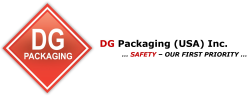

What is Hazmat?
Short for hazardous materials, “Hazmat” encompasses a broad range of substances and items that pose risks to health, safety, property, or the environment during transportation or handling.
These hazardous goods, often referred to as “dangerous goods” (DG) or “Haz,” are regulated due to their potential risks.
Hazmat includes substances that are flammable, corrosive, reactive, toxic, or radioactive. Due to the inherent risks these materials pose, their transport, storage, and handling require stringent regulations and standards to ensure safety and minimize the potential for accidents. Entities involved in the hazmat chain, from manufacturers to freight forwarders, must comply with international and domestic regulations, ensuring that these dangerous goods are packaged, labeled, and documented correctly.
Understanding hazmat is crucial for professionals in logistics, transportation, and related fields, as mishandling these materials can lead to severe consequences, including environmental damage, property loss, and health hazards. The proper management of hazardous goods is not just a regulatory requirement but a vital component of global safety and security practices.